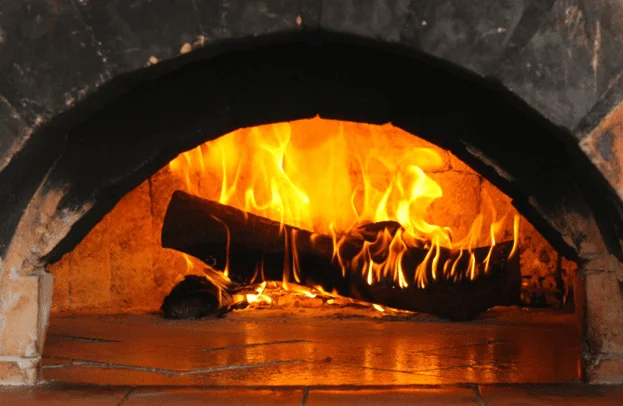Last Updated on March 9, 2024 by Nasir Hanif

Image: https://cdn.pixabay.com/photo/2017/02/22/07/30/burning-log-2088631_1280.jpg
Industrial furnaces are critical components in many production processes. They are utilized in a variety of applications such as metal heat treatment, ceramic manufacture, food processing, and more. Industrial furnaces are classified according to their design, fuel type, operating temperature and application. In this post, let us go over the many types of industrial furnaces, as well as their major features and common applications.
Table of Contents
Direct-Fired Furnaces
Direct-fired furnaces generate heat directly within the furnace chamber by burning fuel such as natural gas or propane. Individual heaters or burners are positioned within the furnace itself. Some examples are:
- Atmospheric Direct-Fired Furnaces: As the name suggests, these operate at atmospheric pressure and are best suited for applications involving temperatures up to 1500°F. They are commonly used for processes like annealing, brazing, and preheating of materials.
- Pressure Direct-Fired Furnaces: Designed to withstand higher pressures, these furnaces can operate at temperatures anywhere between 1500-2500°F. Industrial applications include heat treatment of metals, melting of chemicals, and preheating of combustion air.
- Tunnel Furnaces: Used extensively in the metal heating industry, tunnel furnaces have a continuous horizontal passage and motors that slowly move materials through different temperature zones inside. Common applications are annealing, brazing, and galvanizing of sheet metals and coils.
Indirect-Fired Furnaces
As opposed to direct-fired furnaces, indirect-fired types use a heat transfer medium like gas, steam, or molten salt to transmit heat from the burner or combustion chamber to the processing chamber. Some examples are:
- Gas-Fired Furnaces: Exhaust gases from the burner are used to heat tubes, bricks, or other heat exchange surfaces that then transfer heat to the processing space. They are versatile and suitable for low, medium as well and high-temperature applications up to 3500°F.
- Electric-Powered Furnaces: These use electric resistance heating elements or electrodes located within tubes or walls to generate heat. Operations like brazing, sintering, and heat treating are commonly performed in electric furnaces.
- Molten Salt Furnaces: As the name suggests, molten salt acts as the thermal storage and heat transfer medium in these furnaces. Operating temperatures up to 2500°F make them ideal for processes involving super alloys and refractory materials.
Kiln And Oven Fired Furnaces
Kilns and ovens are used extensively in industries like ceramics, glass, concrete, and food processing for drying, baking, and firing applications. Some common types are:
- Ceramic Kilns: Used for firing ceramic tiles, pottery, and sanitaryware, these kilns slowly heat materials placed on shelves or conveyed through and are fired in oxygen-starved environments.
- Glazing and Firing Kilns: Employed by the glass industry for procedures like glazing, tempering, annealing, etc, these precise temperature control kilns are ideal for glass forming operations.
- Commercial Ovens: Found in food production lines for heating, cooking, and baking of products. Features include rapid heating, precise temperature zones, and conveyors.
- Drying Ovens: Act as low-temperature heating chambers for processes like construction material curing, timber drying, and paper processing. Circulation fans ensure uniform drying.
Induction Furnaces
Rather than using combustion, induction furnaces employ high-frequency alternating currents to melt and refine metals like steel, aluminum, and copper through electromagnetic induction heating. Some key aspects are:
- Coreless induction furnaces generate powerful electromagnetic fields within a water-cooled copper coil to rapidly melt scrap or charged materials.
- They operate at very high temperatures up to 3000°F and are suitable for the melting of high-temperature alloys like titanium and superalloys.
- Furnace styles vary from vertical to horizontal based on material size and characteristics.
- Features like automated charging, fume extraction, and electromagnetic stirring can be incorporated for precise melting control.
One of the advantages of induction furnaces compared to fuel heating is their superior energy efficiency, rapid heating, and ease of installation in enclosed surroundings. Their precise control also makes them ideal for the melting of reactive and high-temperature metals. Designed well for automated operation, induction furnaces require minimum furnace installation service and maintenance.
Plasma Arc Furnaces
Generating heat through highly ionized plasma gas jets directed at charged materials, plasma arc furnaces represent cutting-edge refining technology. Some unique aspects are:
- They can melt any electrically conductive substance like steel, aluminum, or copper alloys with temperatures up to 15,000°F generated within the plasma.
- Extremely fast melting rates and refined microstructures make plasma furnaces perfect for accurately processing superalloys, tool steels, and reactive alloys.
- Vertical, horizontal, and turntable designs exist depending on process and throughput needs.
- Features like computer controls, automated charging/tapping, and dust recovery systems allow for safe, consistent production runs.
- Though requiring high capital investments, plasma furnaces offer the lowest energy consumption per ton of processed material compared to any other heating method.















